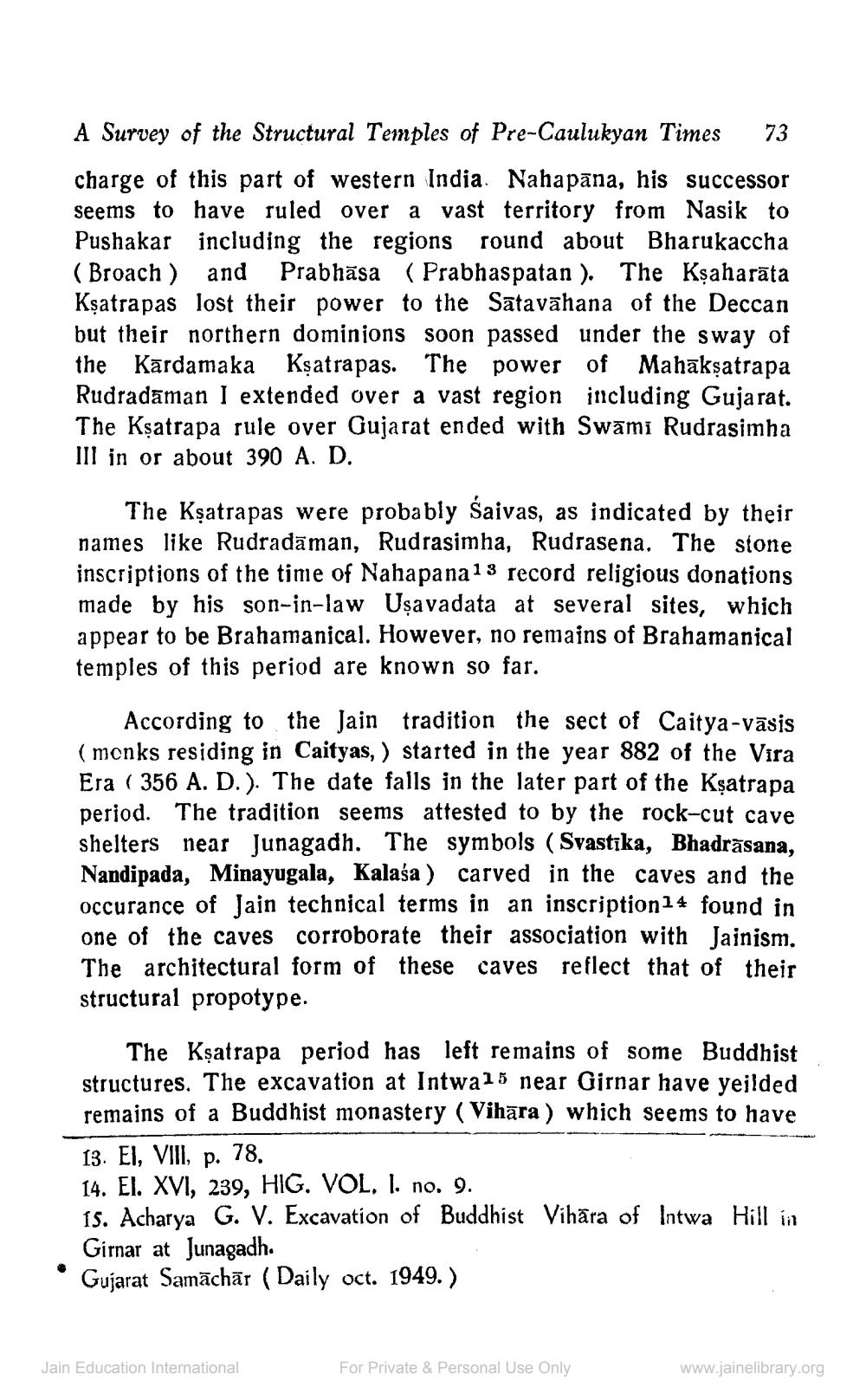________________
A Survey of the Structural Temples of Pre-Caulukyan Times 73 charge of this part of western India. Nahapana, his successor seems to have ruled over a vast territory from Nasik to Pushakar including the regions round about Bharukaccha ( Broach) and Prabhāsa (Prabhaspatan). The Kșaharāta Kşatrapas lost their power to the Satavahana of the Deccan but their northern dominions soon passed under the sway of the Kārdamaka Kşatrapas. The power of Mahakşatrapa Rudradāman I extended over a vast region including Gujarat. The Kșatrapa rule over Gujarat ended with Swami Rudrasimha III in or about 390 A. D.
The Kșatrapas were probably saivas, as indicated by their names like Rudradāman, Rudrasimha, Rudrasena. The stone inscriptions of the time of Nahapana13 record religious donations made by his son-in-law Uşavadata at several sites, which appear to be Brahamanical. However, no remains of Brahamanical temples of this period are known so far.
According to the Jain tradition the sect of Caitya-vāsis (monks residing in Caityas, ) started in the year 882 of the Vira Era ( 356 A. D.). The date falls in the later part of the Kşatrapa period. The tradition seems attested to by the rock-cut cave shelters near Junagadh. The symbols (Svastika, Bhadrāsana, Nandipada, Minayugala, Kalasa) carved in the caves and the occurance of Jain technical terms in an inscription14 found in one of the caves corroborate their association with Jainism. The architectural form of these caves reflect that of their structural propotype.
The Kşatrapa period has left remains of some Buddhist structures. The excavation at Intwa15 near Girnar have yeilded remains of a Buddhist monastery (Vihāra ) which seems to have 13. EI, VIII, p. 78. 14. El. XVI, 239, HIG. VOL. I. no. 9. 15. Acharya G. V. Excavation of Buddhist Vihāra of Intwa Hill in Girnar at Junagadh. Gujarat Samāchār (Daily oct. 1949.)
Jain Education International
For Private & Personal Use Only
www.jainelibrary.org




